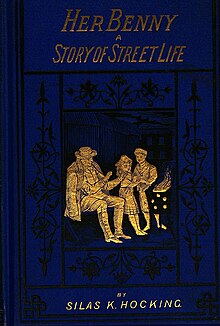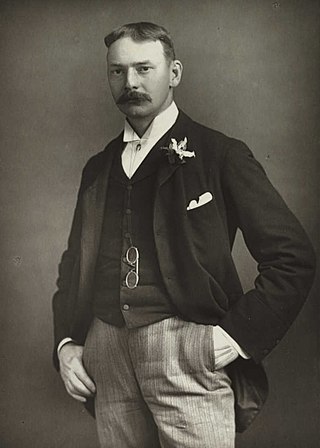
Jerome Klapka Jerome was an English writer and humorist, best known for the comic travelogue Three Men in a Boat (1889). Other works include the essay collections Idle Thoughts of an Idle Fellow (1886) and Second Thoughts of an Idle Fellow; Three Men on the Bummel, a sequel to Three Men in a Boat; and several other novels. Jerome was born in Walsall, England, and, although he was able to attend grammar school, his family suffered from poverty at times, as did he as a young man trying to earn a living in various occupations. In his twenties, he was able to publish some work, and success followed. He married in 1888, and the honeymoon was spent on a boat on the Thames; he published Three Men in a Boat soon afterwards. He continued to write fiction, non-fiction and plays over the next few decades, though never with the same level of success.
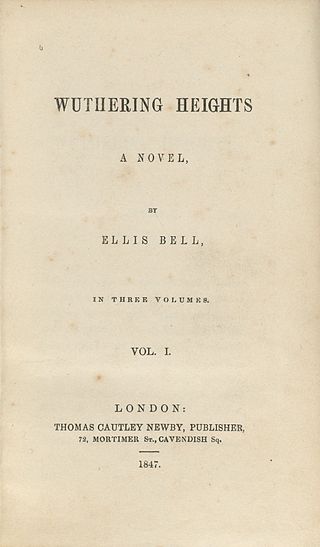
Wuthering Heights is the only novel by the English author Emily Brontë, initially published in 1847 under her pen name "Ellis Bell". It concerns two families of the landed gentry living on the West Yorkshire moors, the Earnshaws and the Lintons, and their turbulent relationships with the Earnshaws' foster son, Heathcliff. The novel was influenced by Romanticism and Gothic fiction.

Native Son (1940) is a novel written by the American author Richard Wright. It tells the story of 20-year-old Bigger Thomas, a black youth living in utter poverty in a poor area on Chicago's South Side in the 1930s. Thomas accidentally kills a white woman at a time when racism is at its peak and he pays the price for it.
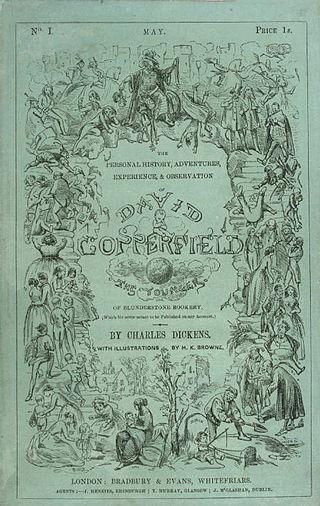
David Copperfield is a novel by Charles Dickens, narrated by the eponymous David Copperfield, detailing his adventures in his journey from infancy to maturity. As such, it is typically categorized in the bildungsroman genre. It was published as a serial in 1849 and 1850 and then as a book in 1850.

Margery Louise Allingham was an English novelist from the "Golden Age of Detective Fiction", and considered one of its four "Queens of Crime", alongside Agatha Christie, Dorothy L. Sayers and Ngaio Marsh.

Bleak House is a novel by Charles Dickens, first published as a 20-episode serial between 12 March 1852 and 12 September 1853. The novel has many characters and several subplots, and is told partly by the novel's heroine, Esther Summerson, and partly by an omniscient narrator. At the centre of Bleak House is a long-running legal case in the Court of Chancery, Jarndyce and Jarndyce, which comes about because a testator has written several conflicting wills. In a preface to the 1853 first edition, Dickens said there were many actual precedents for his fictional case. One such was probably Thellusson v Woodford, in which a will read in 1797 was contested and not determined until 1859. Though many in the legal profession criticised Dickens's satire as exaggerated, Bleak House helped support a judicial reform movement that culminated in the enactment of legal reform in the 1870s.
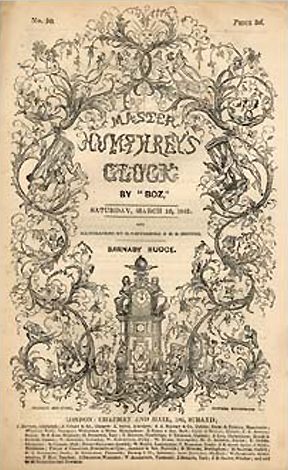
The Old Curiosity Shop is one of two novels which Charles Dickens published along with short stories in his weekly serial Master Humphrey's Clock, from 1840 to 1841. It was so popular that New York readers reputedly stormed the wharf when the ship bearing the final instalment arrived in 1841.
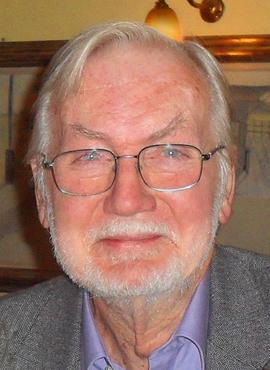
Barry Unsworth FRSL was an English writer known for his historical fiction. He published 17 novels, and was shortlisted for the Booker Prize three times, winning once for the 1992 novel Sacred Hunger.
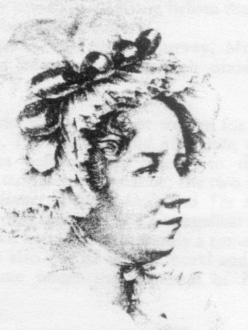
Mary Martha Sherwood was a nineteenth-century English children's writer. Of her more than four hundred works, the best known include The History of Little Henry and his Bearer (1814) and the two series The History of Henry Milner (1822–1837) and The History of the Fairchild Family (1818–1847). Her evangelicalism permeated her early writings, but later works cover common Victorian themes such as domesticity.
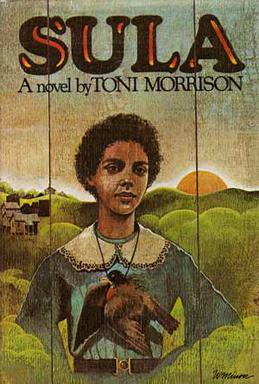
Sula is a 1973 novel by American author Toni Morrison, her first novel to be published after The Bluest Eye (1970).

Nancy is a fictional character in the 1838 novel Oliver Twist by Charles Dickens and its several adaptations for theatre, television and films. She is a member of Fagin's gang and the lover, and eventual victim, of Bill Sikes.
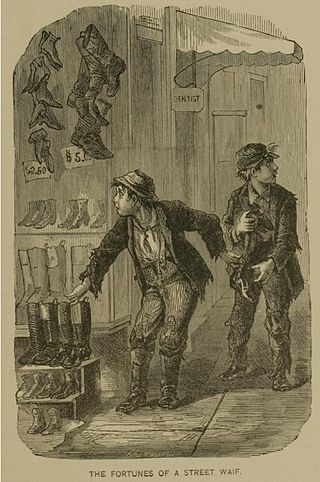
A waif is a person removed, by hardship, loss or other helpless circumstance, from their original surroundings. The most common usage of the word is to designate a homeless, forsaken or orphaned child, or someone whose appearance is evocative of the same.

Hesba Stretton was the pseudonym of Sarah Smith, an evangelical English author of religious books for children. These were highly popular. By the late 19th century Jessica's First Prayer had sold a million and a half copies – ten times more than Alice in Wonderland. She concocted "Hesba Stretton" from the initials of herself and four surviving siblings, along with the name of a Shropshire village she visited, All Stretton, where her sister Anne owned a house, Caradoc Lodge.

Bones of the Moon is a novel by American writer Jonathan Carroll, depicting the real and dream life of a young woman. Like many of Carroll's works, it straddles the horror and fantasy genres.

Silas Kitto Hocking was a Cornish novelist and Methodist preacher. He is known for his novel for youth called Her Benny (1879), which was a best-seller.

Breakfast on Pluto is a 2005 comedy-drama film written and directed by Neil Jordan. It is based on the 1998 novel of the same name, written by Patrick McCabe, as adapted by Jordan and McCabe. The film stars Cillian Murphy as a transgender woman foundling searching for love and for her long-lost mother, in small town Ireland and London in the 1970s.

Heathcliff is a fictional character in Emily Brontë's 1847 novel Wuthering Heights. Owing to the novel's enduring fame and popularity, he is often regarded as an archetype of the tortured antihero whose all-consuming rage, jealousy and anger destroy both him and those around him; in short, the Byronic hero.
Edward III of England has been depicted in a number of fictional works.

Wuthering Heights is a 2009 two-part British ITV television series adaptation of the 1847 novel Wuthering Heights by Emily Brontë. The episodes were adapted for the screen by Peter Bowker and directed by Coky Giedroyc. The programme stars Tom Hardy and Charlotte Riley in the roles of the lovers Heathcliff and Catherine Earnshaw.
Her Benny is a 1920 British silent romance film directed by A. V. Bramble and starring Sydney Wood, Babs Reynolds and Charles Buckmaster. It is adapted from the popular Victorian novel Her Benny (1879) by Silas K. Hocking. It follows a young boy from Liverpool as he grows up in a harsh environment.
